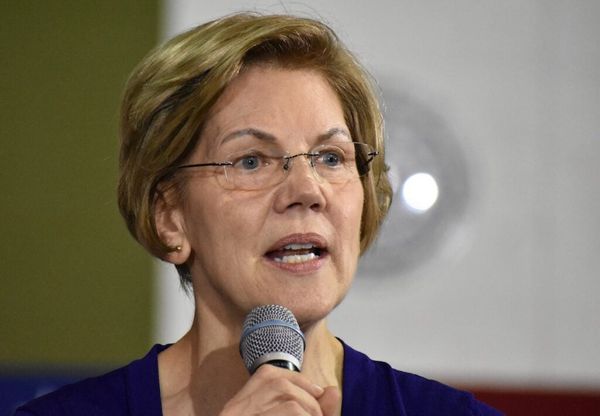
Sitting on a giant pile of fossil fuels in a year set to go down as the hottest on record – pockmarked by one flame-grilled disaster after another – requires some careful and creative public positioning.
One must be careful not to completely ignore the climate crisis while trying to navigate a path that continues to justify drilling and burning Australia’s fossil fuel du jour – gas.
Speaking to the Australian Financial Review’s Climate and Energy Summit this week, the resources minister, Madeleine King, reached for the compass in an 1,800-word speech that backed gas, which would be “part of the world’s energy mix for the foreseeable future.”
Australia would continue to be a trusted and reliable supplier of liquified natural gas, King told the summit. The country’s gas was helping the region prosper.
“The [International Energy Agency] has acknowledged that in all of its transition scenarios, continued investment in gas will be needed to meet demand,” she said.
The IEA last month updated its thinking on how economies could collectively work to meet a global goal of net zero greenhouse gas emissions by 2050.
King’s interpretation of the IEA’s official position isn’t wrong, but importantly – given she is speaking about the future of energy – it is incomplete.
What the IEA also said last month was that “no new long-lead time upstream oil and gas projects” were needed in its net zero scenario (and neither are new coalmines or “unabated” coal power plants).
Even without any new climate policies, the speed of the rollout of clean energy meant the agency was now projecting that “demand for coal, oil and natural gas will all peak this decade”.
What about emissions?
King provided plentiful statistics in her speech. Australia’s LNG sales to Japan were worth an estimated $34bn. Australia’s LNG industry made up 21% of the global market for liquified gas.
Of the country’s gas production, 70% is exported (actually, when you count all the gas used in the production of LNG, the latest government figures suggest it’s more like 83%).
What did she have to say about emissions? In reference to gas, she offered one sentence.
“Equally, gas and the gas sector are a significant source of Australian greenhouse gas emissions,” she said.
Well, there’s also a statistic for that.
According to the government’s own draft Future of Gas Strategy document, the country’s gas industry is responsible for a whopping 21% of the country’s entire footprint.
That’s an interesting observation of an industry that’s trying to position itself as part of the solution to the climate crisis.
‘Not to be sneezed at’
So 21% of the country’s carbon footprint comes from the gas industry. That is something not to be sneezed at.
What else should we not be sneezing at?
King said: “Australia hosts the world’s largest commercial CCS project, Chevron’s Gorgon LNG project at Barrow Island in Western Australia. Eight million tonnes of stored CO2 is not to be sneezed at.”
CCS (carbon capture and storage) is the perennially over-promising and grossly under-delivering set of technologies to capture carbon dioxide and then store it.
Dogged by delays and underperformance, Chevron’s carbon capture project started injecting CO2 captured from its gasfield in August 2019. So that’s eight million tonnes in a little less than four years.
But that amount is eclipsed by the total greenhouse gases from the project and the burning of the gas, which Chevron estimates to be 49.8m tonnes every year.
That’s certainly not to be sneezed at.
The greatest strawman
Speaking to the AFR this week, the boss of the major gas producer Santos, Kevin Gallagher, appeared to deploy a classic strawman argument while defending the fortunes of the product his company sells.
The newspaper reported: “Gallagher said government policies to drive decarbonisation should not focus on one solution or technology “because that’s not going to deliver us what we want”.
Absolutely nobody in the energy industry, anywhere, at any time, has ever suggested that government policy should focus on “one solution or technology”.
Gallagher told the newspaper’s energy summit he was “not sure the world can leave fossil fuels behind” and said he was confident there would be “a very big place for gas in the future.”
This doesn’t sound like the boss of a company that says its climate policies are aligned with the UN’s sustainable development goal of taking “urgent action to combat climate change and its impacts”.
Nor does it chime with the view of the IEA that, as already mentioned, thinks demand for gas will peak this decade even without new climate policies.
The IEA’s updated net zero scenario for the globe’s energy industry suggests demand for natural gas drops from 4,150bn cubic metres in 2022 to 3,400bcm in 2030 and 900bcm in 2050.
That suggests if companies and governments are serious about meeting a 1.5C global temperature goal, then gas doesn’t occupy a “very big place” in the future, but rather an increasingly small one.
• This article was amended on 13 October 2023 to correct some errors of scale in the IEA’s updated net zero scenario.







